For all its beautiful imagery and symbolism, this episode exposed a weakness that Heike Monogatari may struggle to overcome.
Where are we situated in The Tale of the Heike’s larger story? The year is 1180, and we’ve just witnessed the Taira clan’s ascension to the height of imperial influence. In response to several of former Emperor Go-Shirakawa’s power plays, Kiyomori uses his clan’s military strength to replace over 40 court officials with Heike loyalists, and confines Go-Shirakawa to limit his political influence. Upon Emperor Takakura’s abdication, Kiyomori’s infant grandson succeeds him, putting a member of the Taira family on the Chrysanthemum Throne. And the centerpiece of this episode, the Battle of Uji Bridge, results in a Taira victory over the rebellious Minamoto clan, further strengthening their position in the capital. Kiyomori did not travel to the battlefield himself, entrusting the job to two of his sons, Tomomori and Shigehira… as well as Koremori, eldest son of the late great Shigemori.
Heike Monogatari moves at a fast clip, but even so, I expected Shigemori’s passing to cast a larger shadow over this episode. Kiyomori appeared to mourn him at the start, given his retreat to his residence at Fukuhara, but that obviously didn’t last long. Biwa’s inheritance of his left eye is hardly worth mentioning, since it was divorced from the rest of this week’s events. And Koremori’s failure to live up to his father’s legacy, while important to the episode, didn’t receive nearly the focus it should have. He wasn’t even present during Shigehira’s visit to their family estate, and he absolutely should have been – it was a perfect chance to contrast the two men before their differences became even clearer on the battlefield. The show’s major weakness at this point is the lack of a clear protagonist: Biwa has been sidelined (and will likely stay a secondary character for a while, since the Genpei War is now underway), Shigemori is dead, and Koremori’s distaste for war clearly isn’t what writer Reiko Yoshida is interested in exploring, at least not in depth. Honestly, Shigehira feels like the show’s new center, given his similarities to his recently departed brother – both are capable and considerate men, only one of which feels like a beneficial trait in this cutthroat era.
I don’t mean to imply that Koremori was a non-factor in this episode, just that I wanted him to play a more central role. The smaller part he did have was great, though, as was the rest of the Battle of Uji Bridge. Composed largely of stills, the art direction for these shots was inspired by emaki, illustrated scrolls that tell stories in multiple parts when unfurled. The lively subjects and earthy colors of these images gave birth to a muted sort of chaos, the way an ageless observer like the series’ lute priest might view such a battle. She was our narrator for its first portion, filling in military details and urging on its participants from across the chasm of time – a disconnect the show is likely to revisit as the Genpei War proceeds. Scenes of smoky skies, arrow-riddled corpses, and men desperately praying in the midst of battle were filtered through Koremori’s eyes, and he wept for the desolation he witnessed, even as he struggled to stay alive. Heike Monogatari’s approach in depicting warfare may be minimally animated, but it knows how to do a lot with a little.
Oh, and the symbolism I mentioned at the start of this post? We’ve gotten heavy doses in every episode so far (eyes and flowers especially), but this one was practically drenched in it. At one point the show cut away from the action to depict Koremori’s tearful gaze like this, for crying out loud. Tokuko’s monologue about cycles of violence incorporated a shot of the sun in the shape of an eye, as well (it’s in the grid above), overlooking a world without forgiveness. But it wasn’t all so blatant – the nobori (military banners held up by cross-rods) at the bottom of that eclipse-like image serve as a bookend to the much sunnier ones right above them. In that first shot, the red banners accompanied Kiyomori’s return to the capital, foreshadowing the bloodshed he would cause. In the second shot, that promise has been fulfilled, and Kiyomori’s ambition has made the world a darker place. Crows served as omens of death, falling maple leaves signaled Tokuko’s change of heart toward her husband, and hanging lanterns served as reminders of Shigemori’s absence (he was nicknamed “Lantern Lord” in episode 2). The highest compliment I can pay an anime with regard to symbolism is that it reminds me of Ping Pong the Animation – this week, Heike Monogatari deserves that praise.

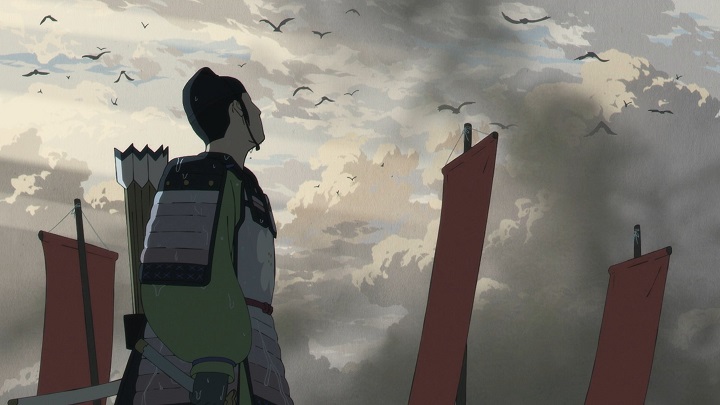
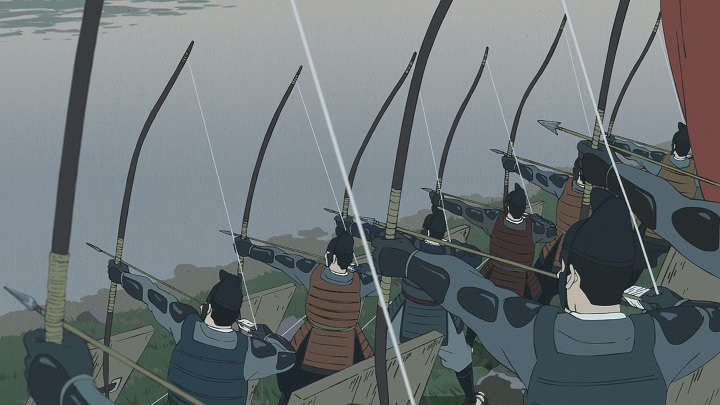
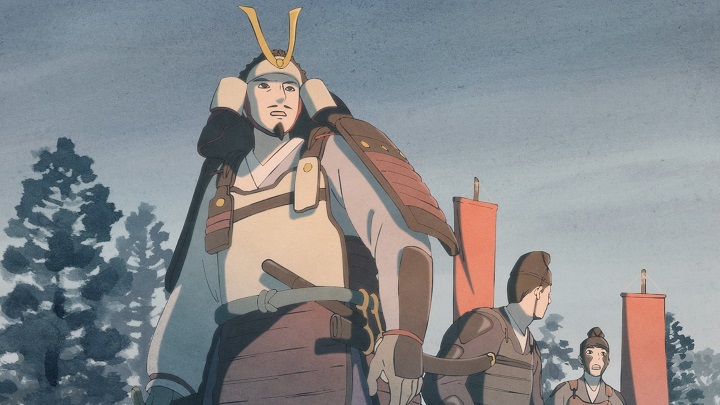
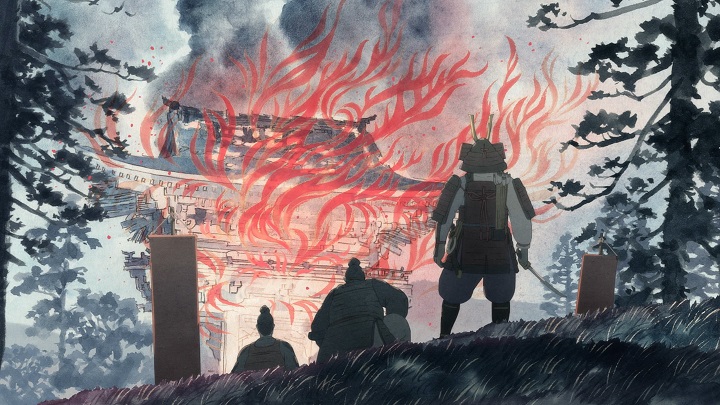

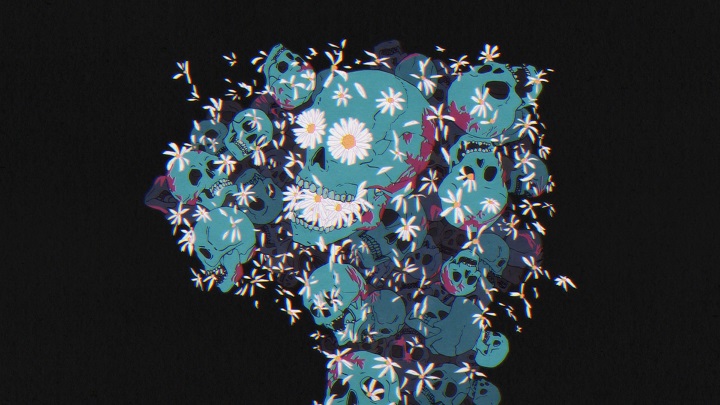
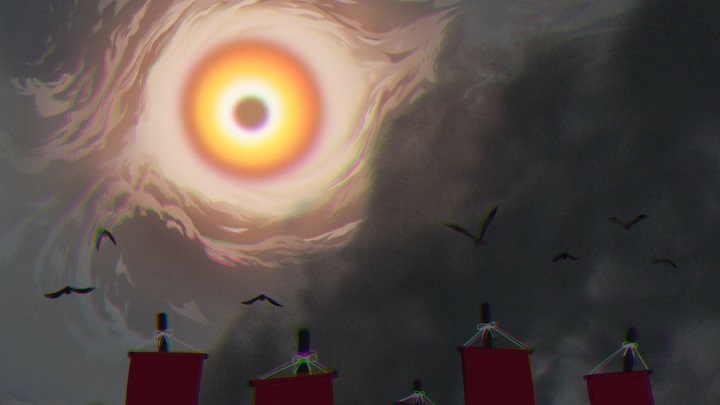
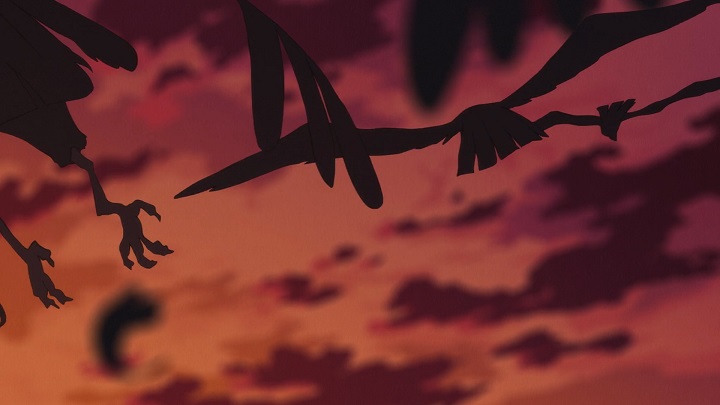
I have pointed out several times that it seems like opinions are cooling a bit on this series due to the problems that you’re pointing out, as well as the aforementioned issues with adapting the text but are you still hopeful that this series can make it?
I have ignored your comments several times because my posts are about Heike Monogatari, not other people’s opinions of it.